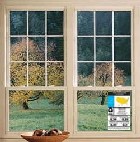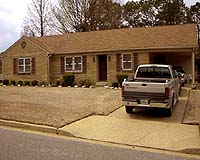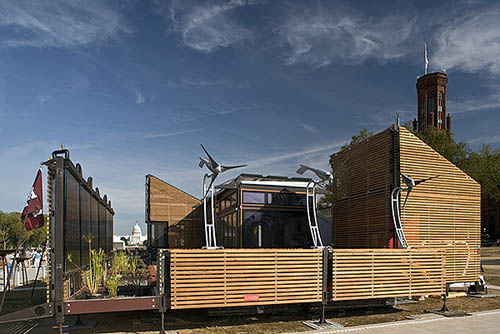That is right the Sun creates all the energy on the Earth. Well, the Sun or its cousins because the heavy metals that we use for our version of “nuclear power” were created in Suns of the past that blew up. The oil, natural gas and the coal we burn are nothing but dead congealed plants and animals nurtured by the sun. Really think about it what is “natural gas”. The stink of the dead from the past. So why do we do that? We can get all the energy we need directly from the Sun? The point is that if the capitalist system can sell you bottled water then it surely can sell you petroleum products.
http://en.wikipedia.org/wiki/Sun

Sun
From Wikipedia, the free encyclopedia
 |
|
| Observation data | |
|---|---|
| Mean distance from Earth |
1.496×108 km 8 min 19 s at light speed |
| Visual brightness (V) | ?26.74 [1] |
| Absolute magnitude | 4.83 [1] |
| Spectral classification | G2V |
| Metallicity | Z = 0.0177 [2] |
| Angular size | 31.6? – 32.7? [3] |
| Adjectives | solar |
| Orbital characteristics | |
| Mean distance from Milky Way core |
~2.5×1017 km 26,000 light-years |
| Galactic period | (2.25–2.50) × 108 a |
| Velocity | ~220 km/s (orbit around the center of the Galaxy) ~20 km/s (relative to average velocity of other stars in stellar neighborhood) 396.5±3.0 km/s[4] (relative to the cosmic microwave background) |
| Physical characteristics | |
| Mean diameter | 1.392×106 km [1] 109 × Earth |
| Equatorial radius | 6.955×105 km [5] 109 × Earth[5] |
| Equatorial circumference | 4.379×106 km [5] 109 × Earth[5] |
| Flattening | 9×10?6 |
| Surface area | 6.0877×1012 km2 [5] 11,990 × Earth[5] |
| Volume | 1.412×1018 km3 [5] 1,300,000 × Earth |
| Mass | 1.9891×1030 kg [1] 332,900 × Earth[5] |
| Average density | 1.408×103 kg/m3 [1][5][6] |
| Different Densities | Core: 1.5×105 kg/m3 lower Photosphere: 2×10?4 kg/m3 lower Chromosphere: 5×10?6 kg/m3 Avg. Corona: 1×10?12 kg/m3 [7] |
| Equatorial surface gravity | 274.0 m/s2 [1] 27.94 g 28 × Earth[5] |
|
Escape velocity (from the surface) |
617.7 km/s [5] 55 × Earth[5] |
| Temperature of core |
~15.7×106 K [1] |
|
Temperature of surface (effective) |
5,778 K [1] |
| Temperature of corona |
~5×106 K |
| Luminosity (Lsol) | 3.846×1026 W [1] ~3.75×1028 lm ~98 lm/W efficacy |
| Mean Intensity (Isol) | 2.009×107 W·m?2·sr?1 |
| Rotation characteristics | |
| Obliquity | 7.25° [1] (to the ecliptic) 67.23° (to the galactic plane) |
|
Right ascension of North pole[8] |
286.13° 19h 4min 30s |
|
Declination of North pole |
+63.87° 63°52′ North |
| Sidereal rotation period (at equator) |
25.05 days [1] |
| (at 16° latitude) | 25.38 days [1] 25d 9h 7min 13s [8] |
| (at poles) | 34.3 days [1] |
| Rotation velocity (at equator) |
7.189×103 km/h [5] |
| Photospheric composition (by mass) | |
| Hydrogen | 73.46%[9] |
| Helium | 24.85% |
| Oxygen | 0.77% |
| Carbon | 0.29% |
| Iron | 0.16% |
| Sulfur | 0.12% |
| Neon | 0.12% |
| Nitrogen | 0.09% |
| Silicon | 0.07% |
| Magnesium | 0.05% |
The Sun is the star at the center of the Solar System. It has a diameter of about 1,392,000 kilometers (865,000 mi), about 109 times that of Earth, and its mass (about 2 × 1030 kilograms, 330,000 times that of Earth) accounts for about 99.86% of the total mass of the Solar System.[10] About three quarters of the Sun’s mass consists of hydrogen, while the rest is mostly helium. Less than 2% consists of heavier elements, including iron, oxygen, carbon, neon, and others.[11]
The Sun’s color is white, although from the surface of the Earth it may appear yellow because of atmospheric scattering.[12] Its stellar classification, based on spectral class, is G2V, and is informally designated a yellow star, because the majority of its radiation is in the yellow-green portion of the visible spectrum.[13] In this spectral class label, G2 indicates its surface temperature of approximately 5,778 K (5,505 °C; 9,941 °F), and V (Roman five) indicates that the Sun, like most stars, is a main sequence star, and thus generates its energy by nuclear fusion of hydrogen nuclei into helium. In its core, the Sun fuses 430–600 million tons of hydrogen each second. Once regarded by astronomers as a small and relatively insignificant star, the Sun is now presumed to be brighter than about 85% of the stars in the Milky Way galaxy, most of which are red dwarfs.[14][15] The absolute magnitude of the Sun is +4.83; however, as the star closest to Earth, the Sun is the brightest object in the sky with an apparent magnitude of ?26.74.[16][17] The Sun’s hot corona continuously expands in space creating the solar wind, a hypersonic stream of charged particles that extends to the heliopause at roughly 100 astronomical units. The bubble in the interstellar medium formed by the solar wind, the heliosphere, is the largest continuous structure in the Solar System.[18][19]
The Sun is currently traveling through the Local Interstellar Cloud in the Local Bubble zone, within the inner rim of the Orion Arm of the Milky Way galaxy. Of the 50 nearest stellar systems within 17 light-years from Earth, the Sun ranks 4th in mass.[20] The Sun orbits the center of the Milky Way at a distance of approximately 24,000–26,000 light years from the galactic center, completing one clockwise orbit, as viewed from the galactic north pole, in about 225–250 million years.
:}
The sun will come out tomorrow tomorrow tomorrow.
http://www.youtube.com/watch?v=6Jdpc7aaAlQ&feature=related
:}












